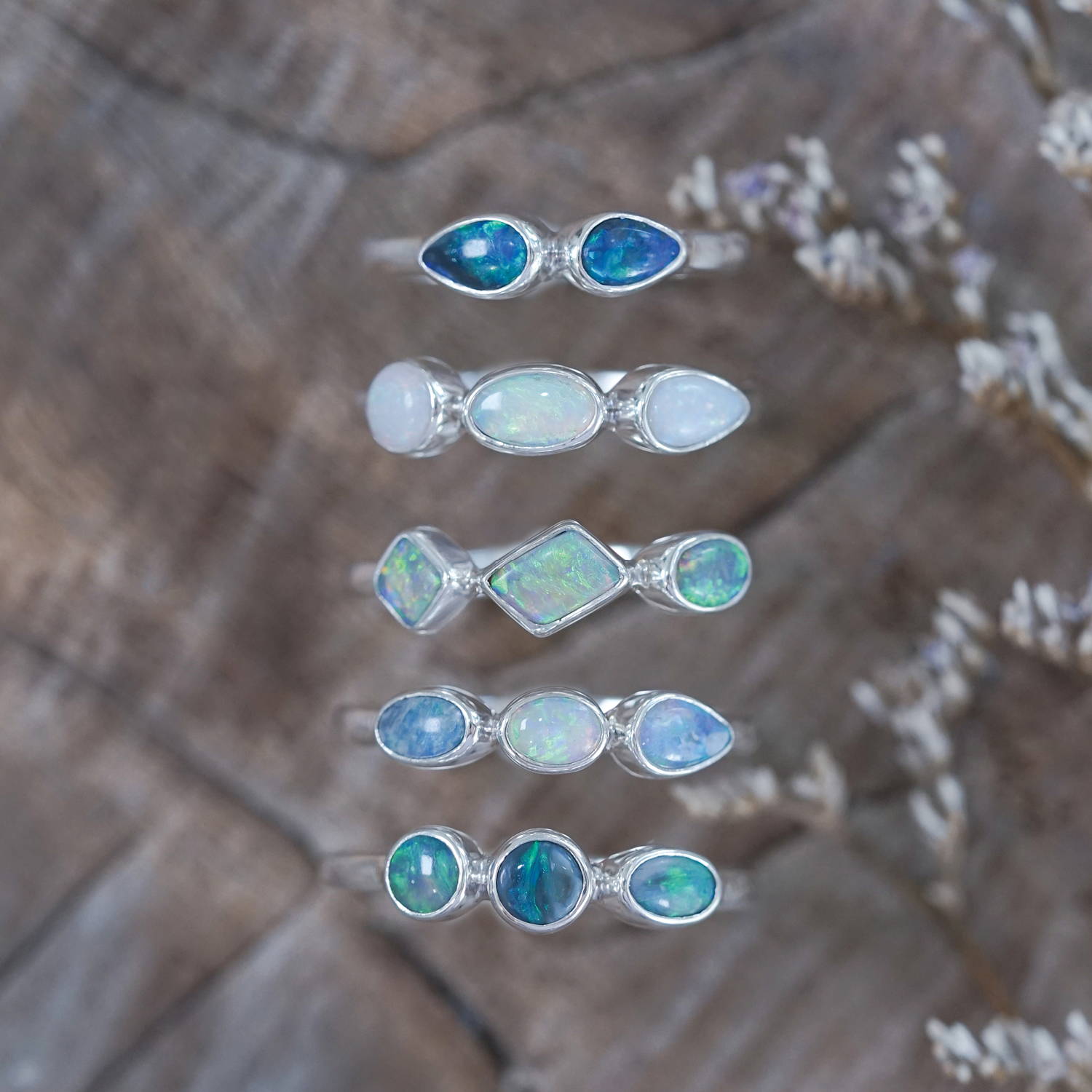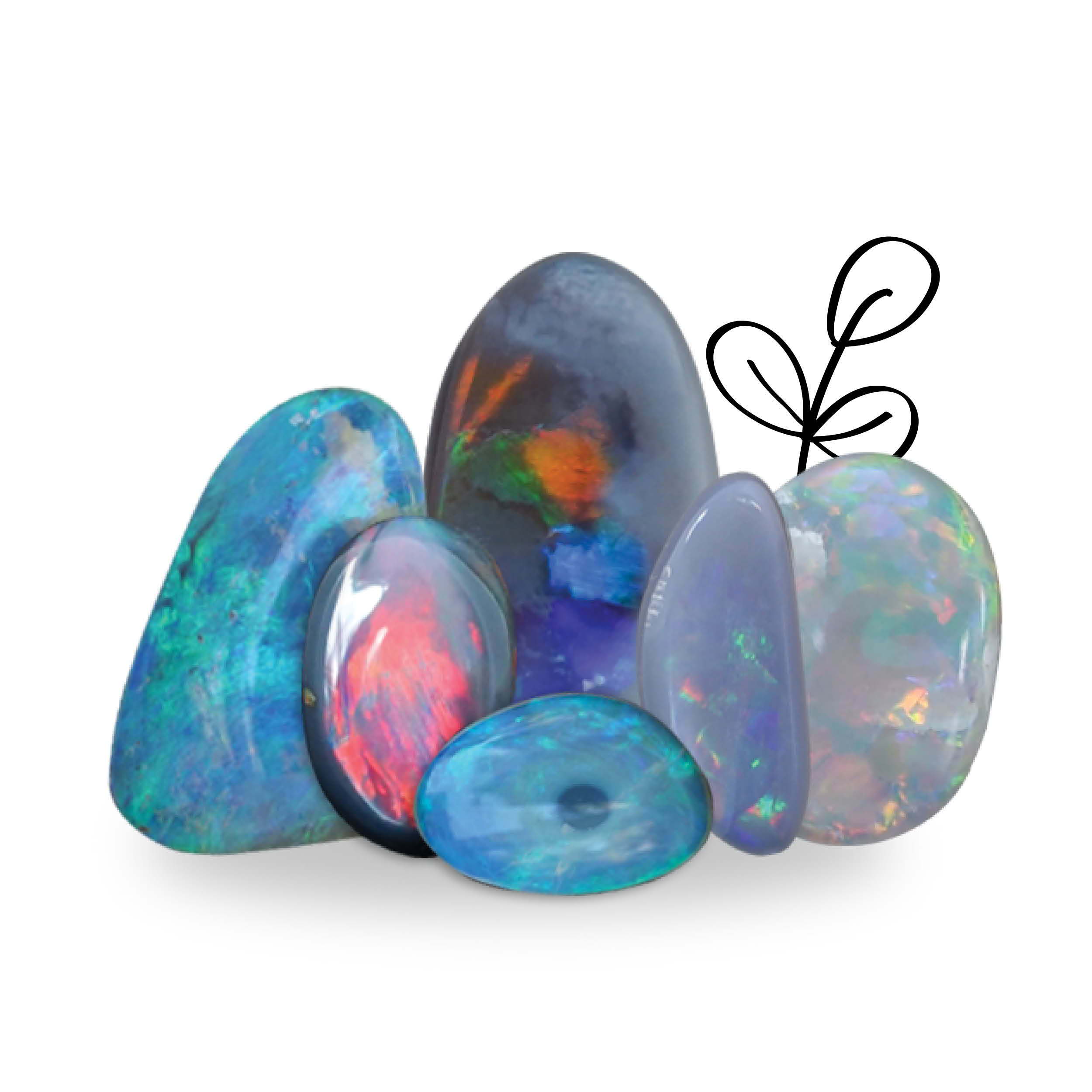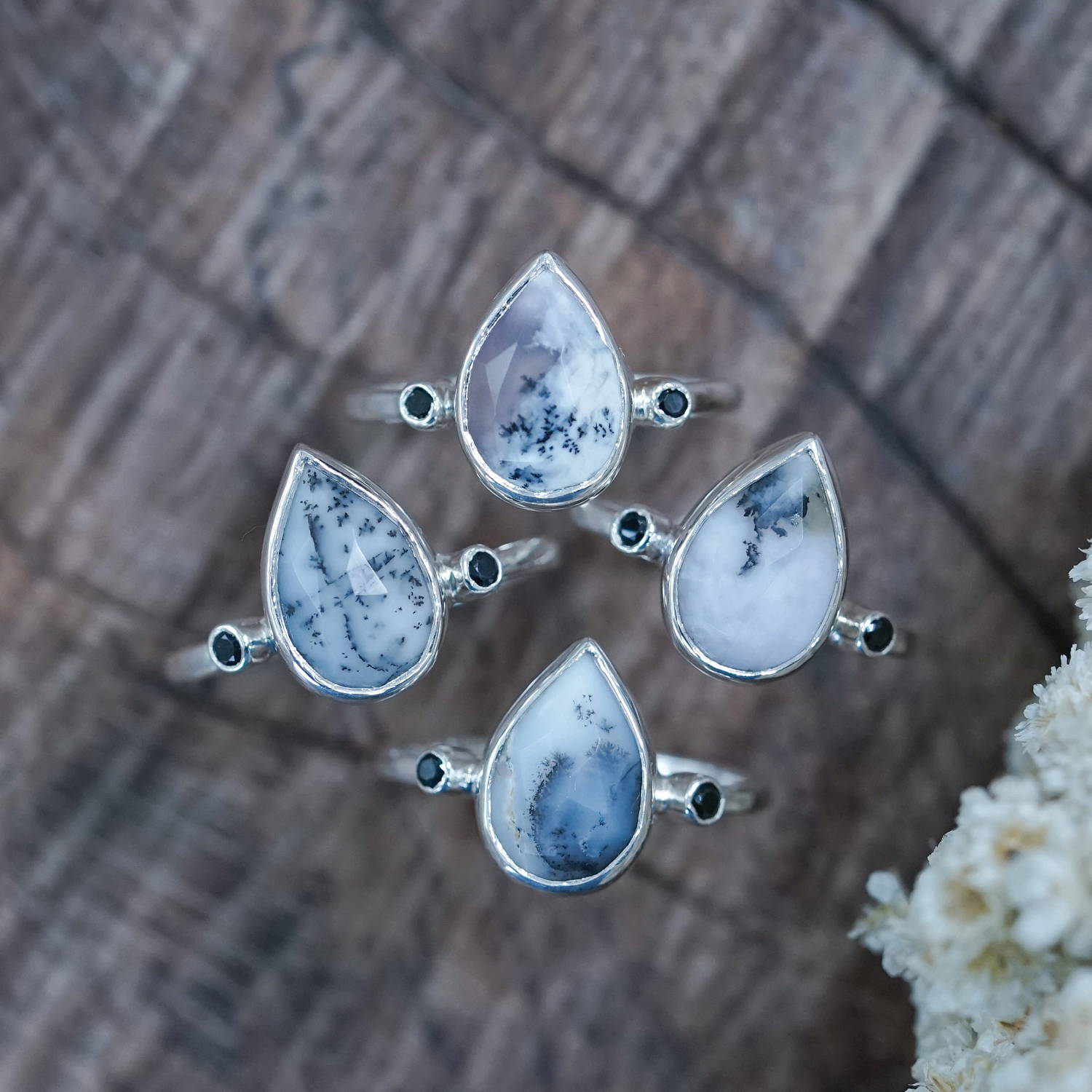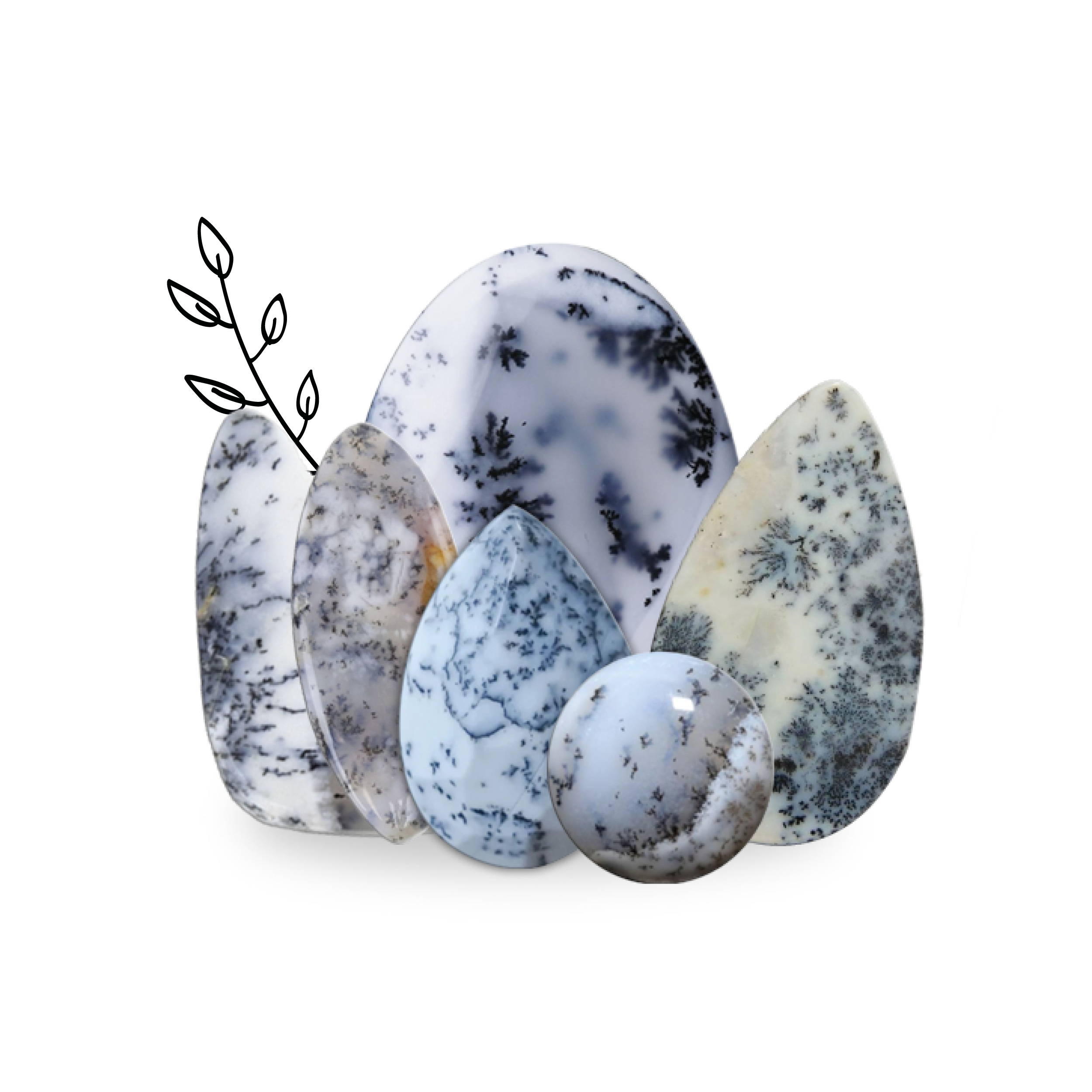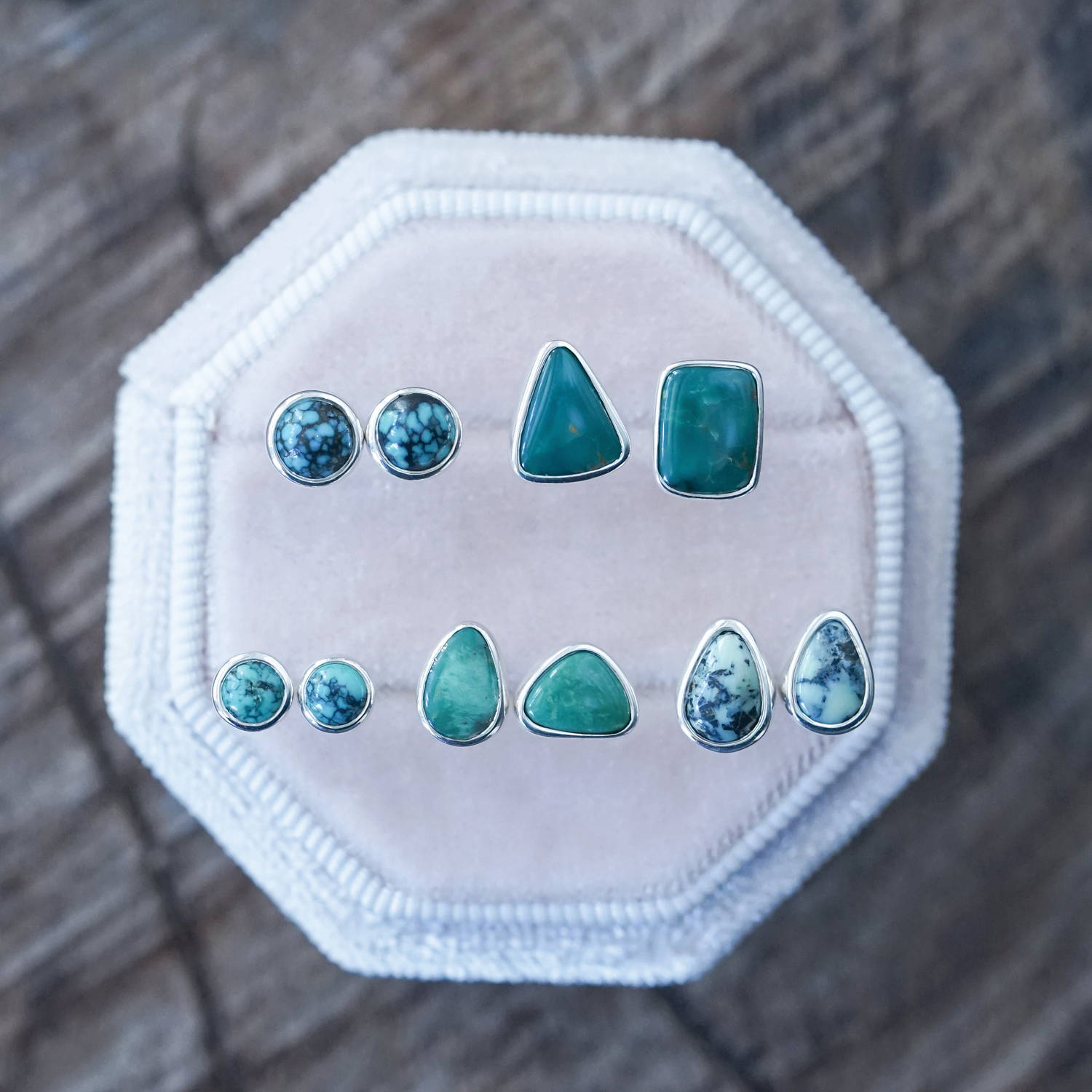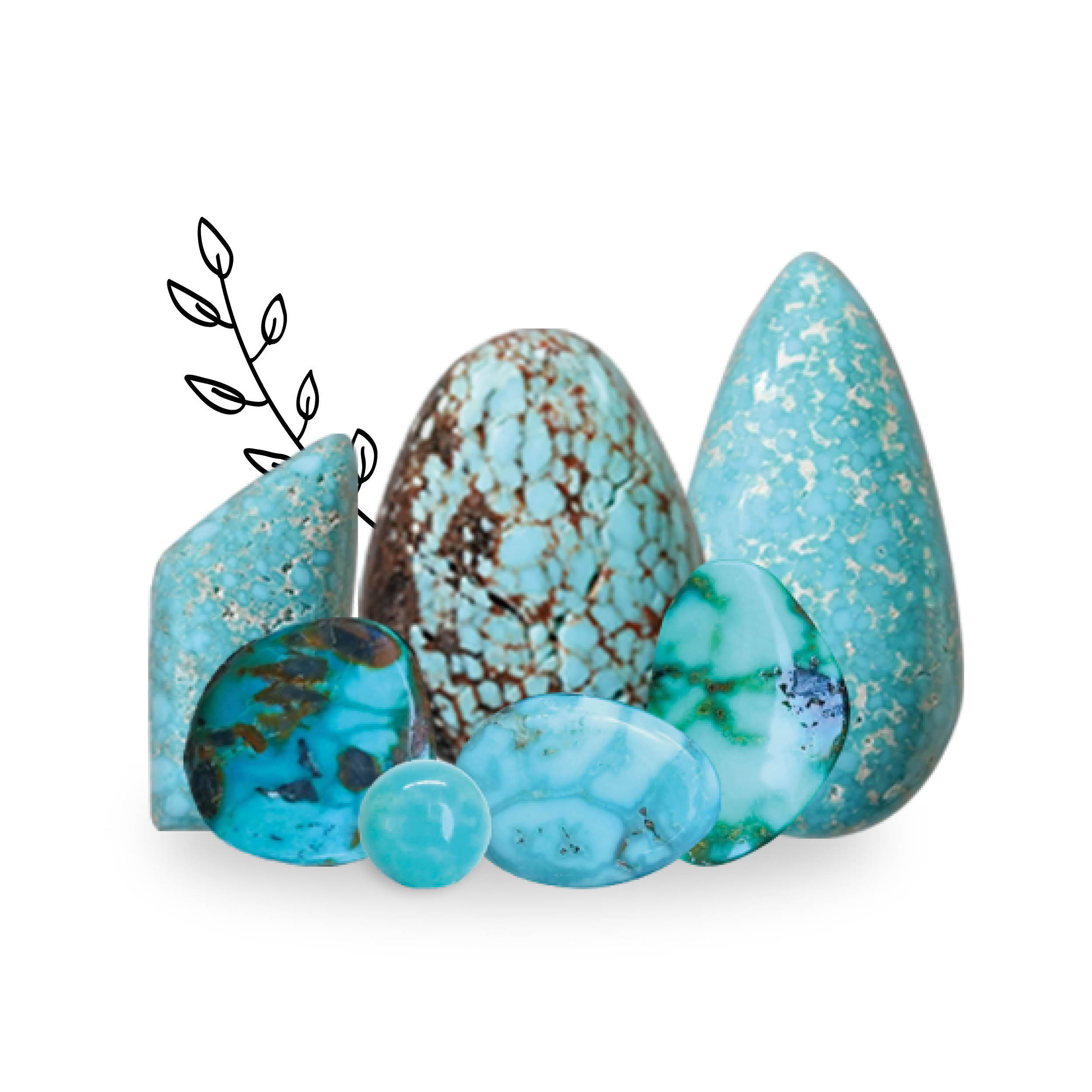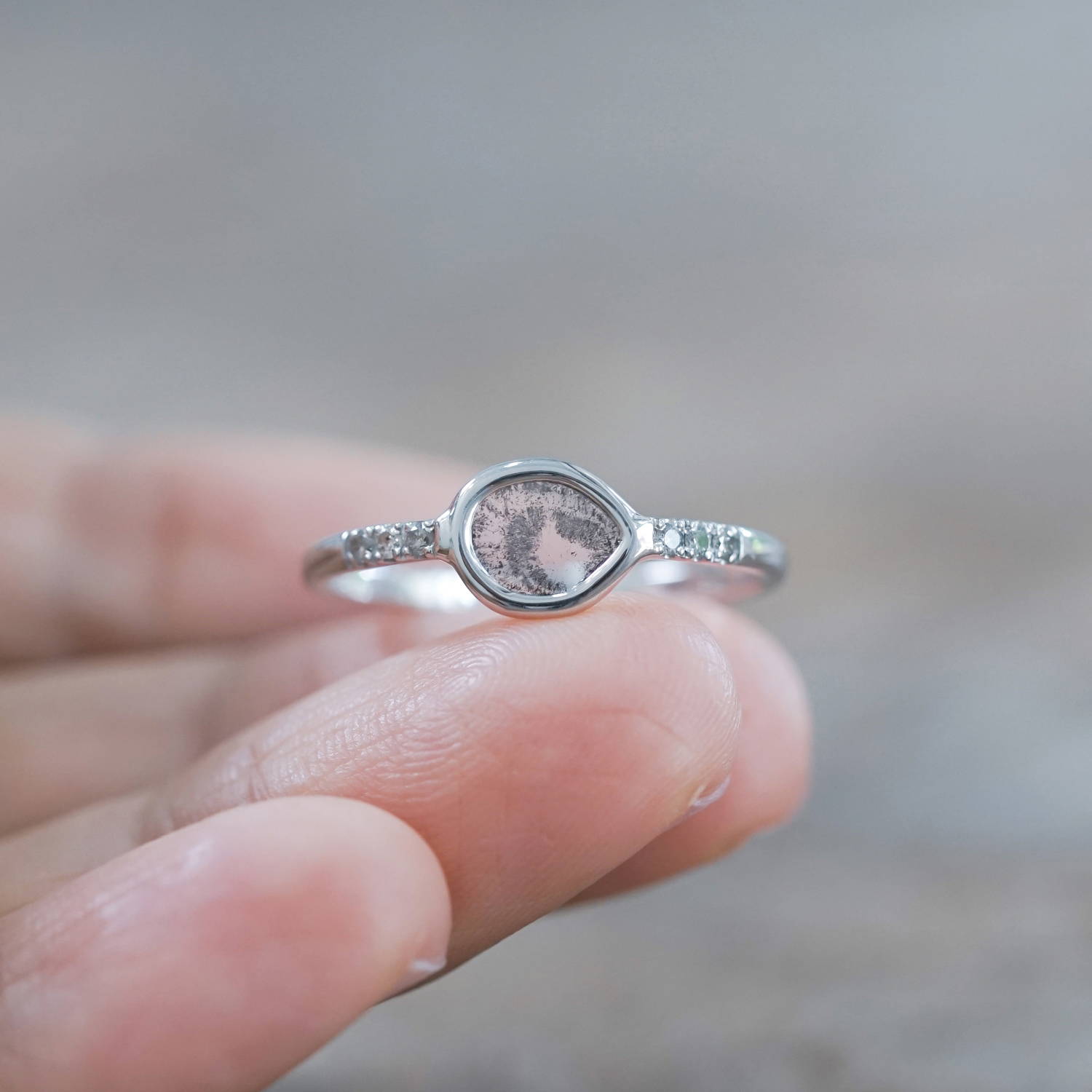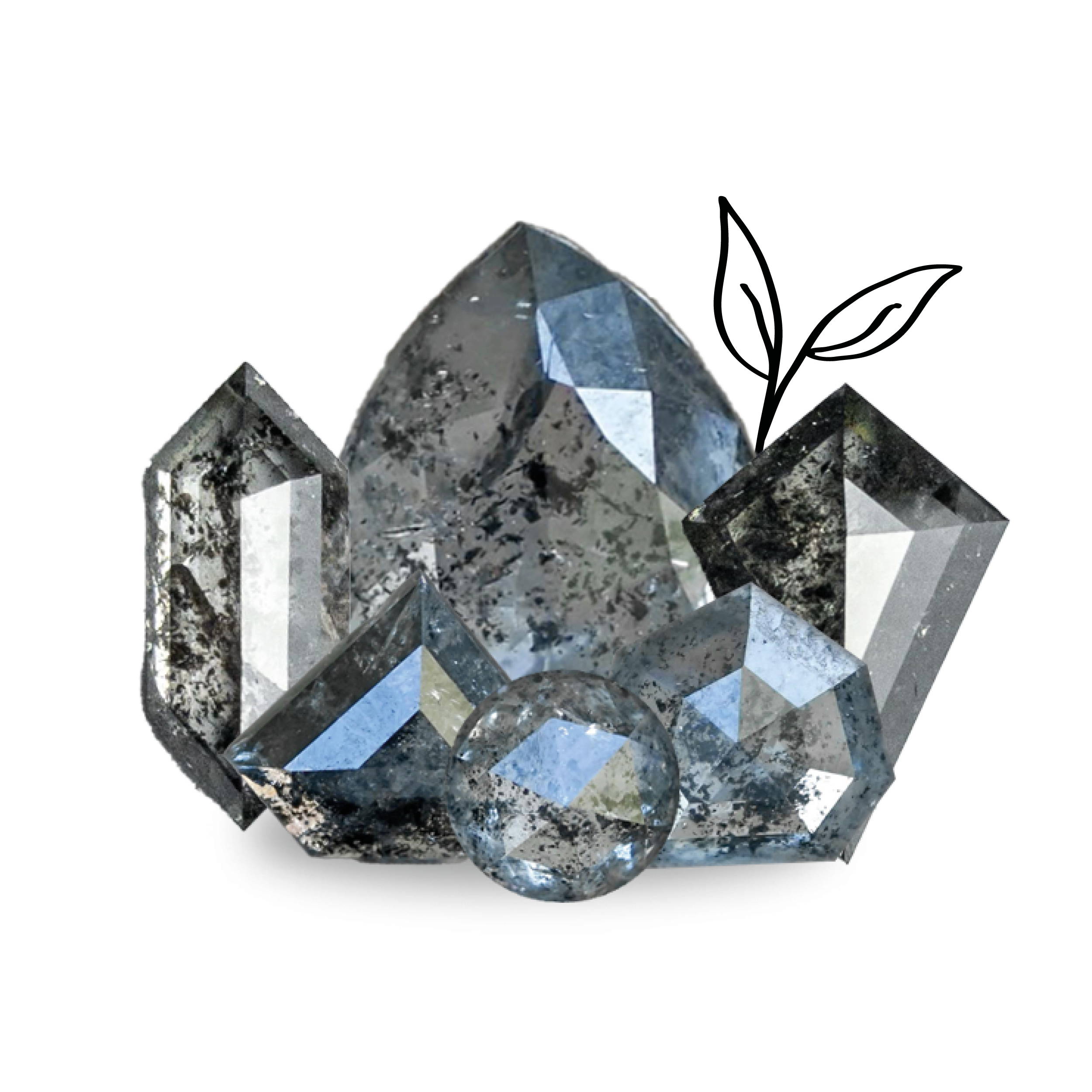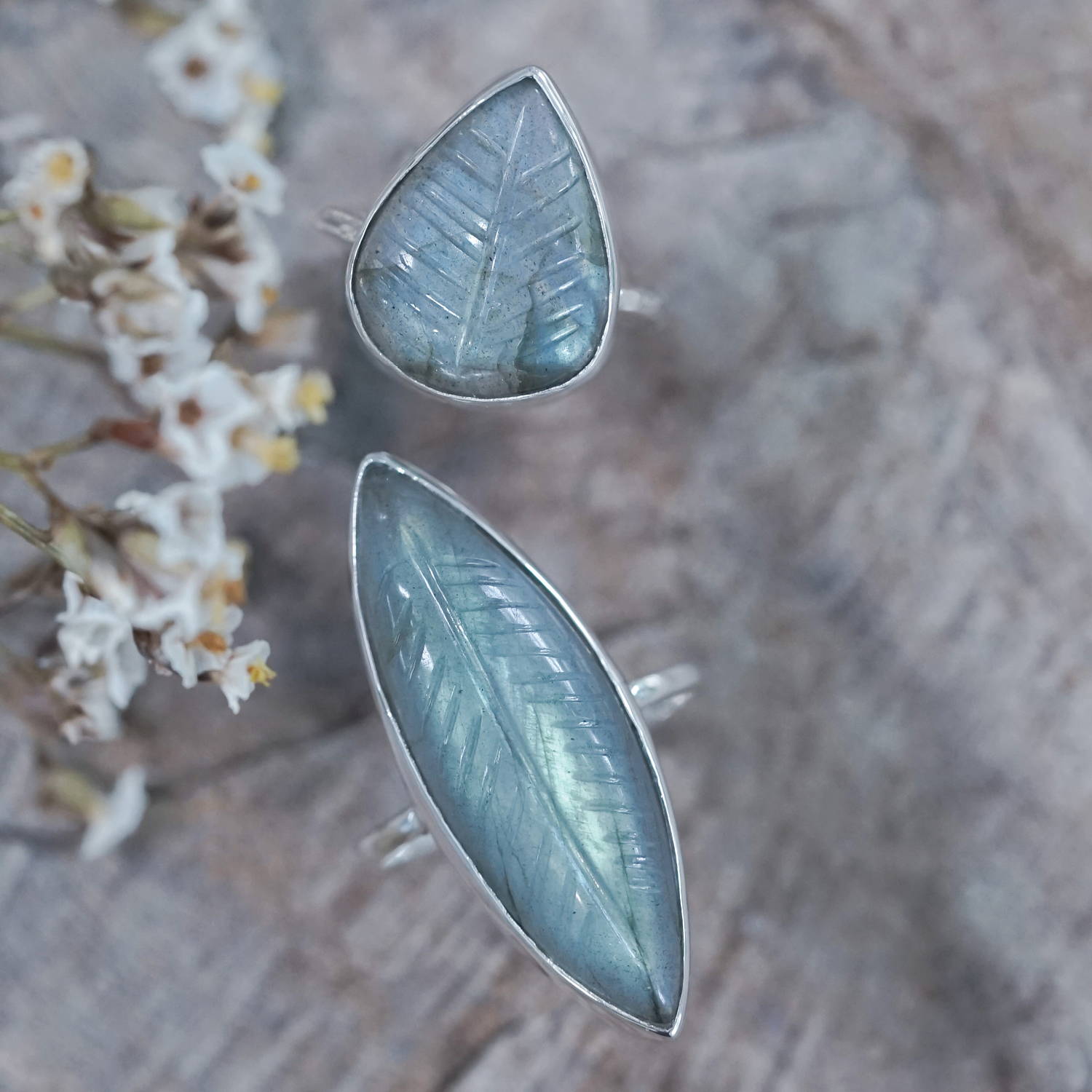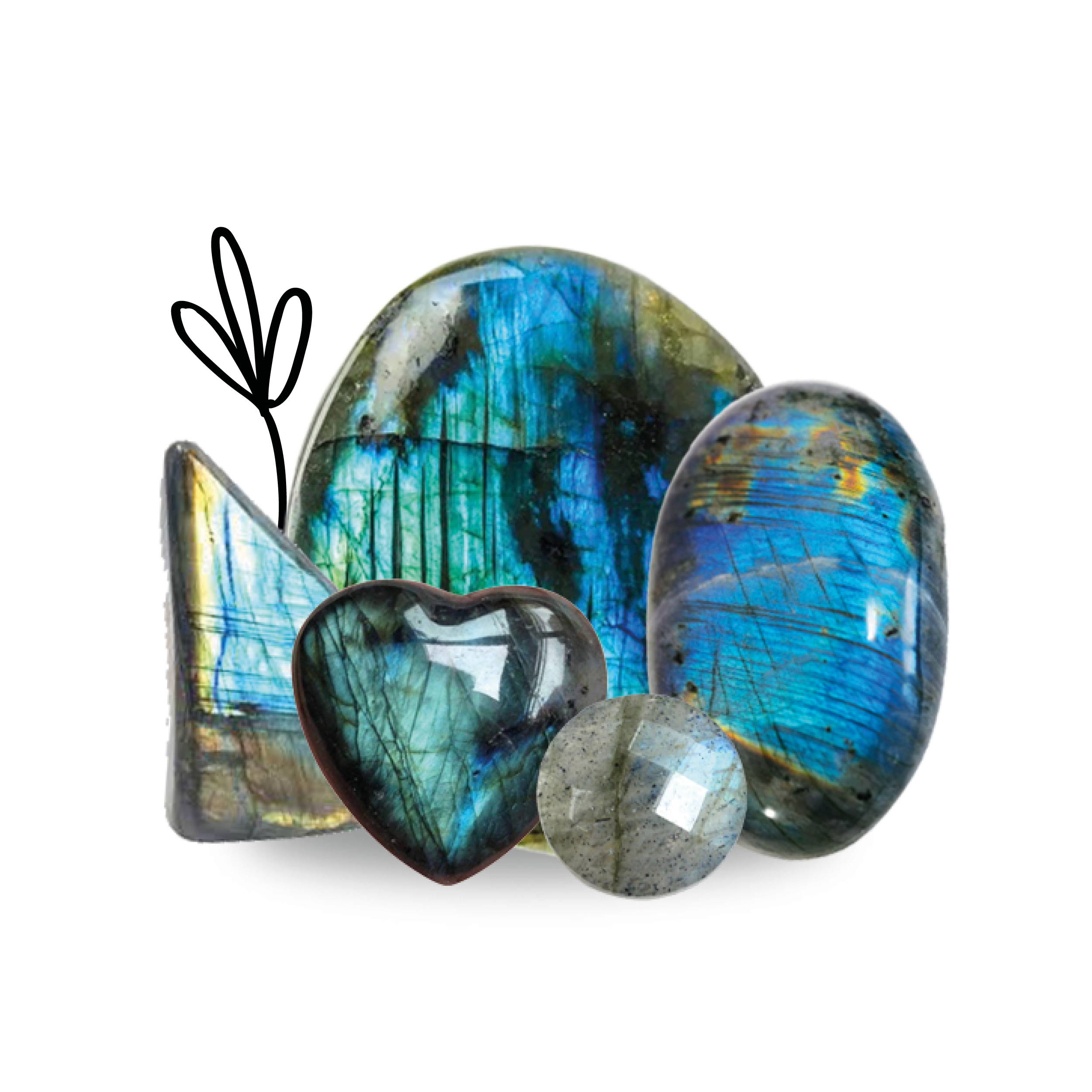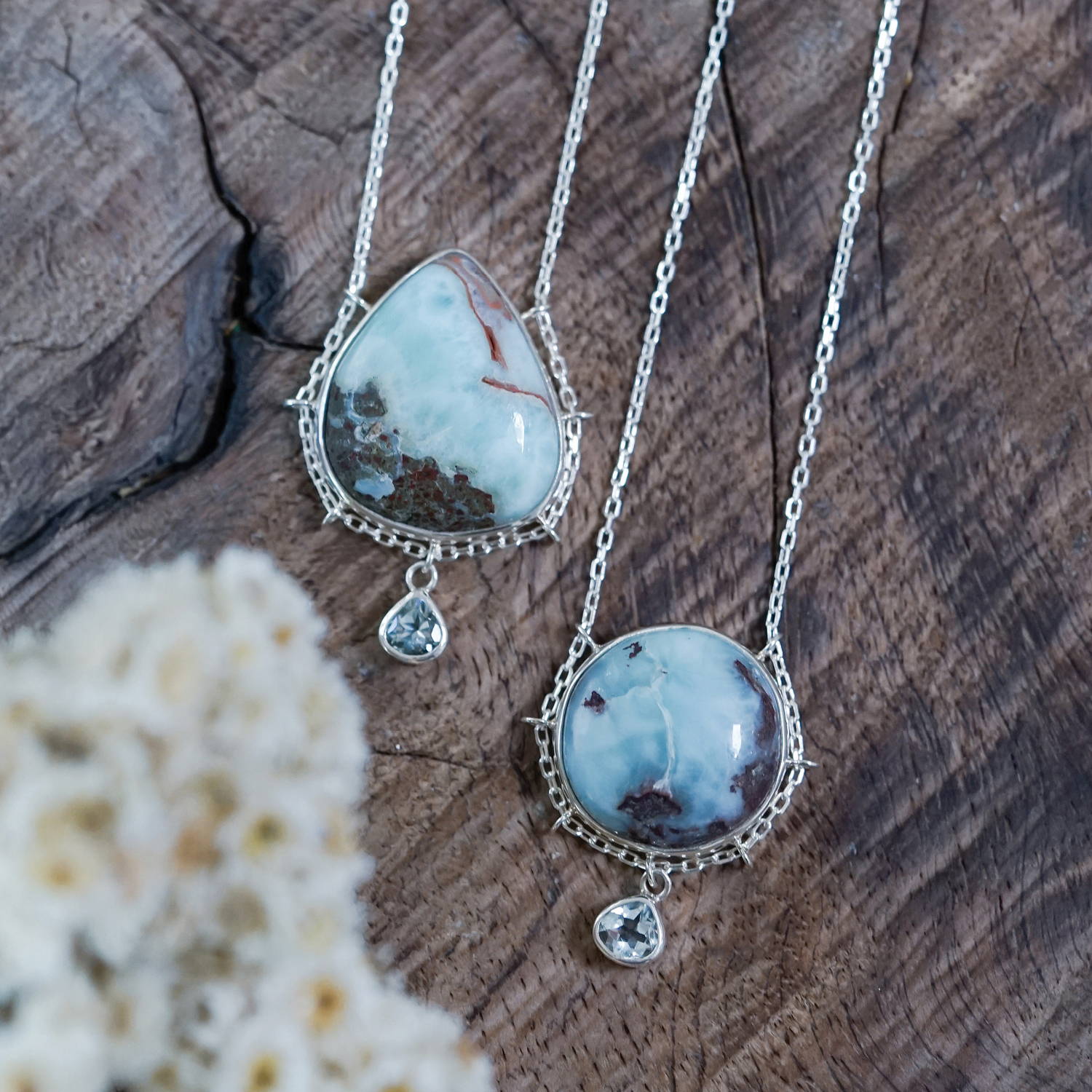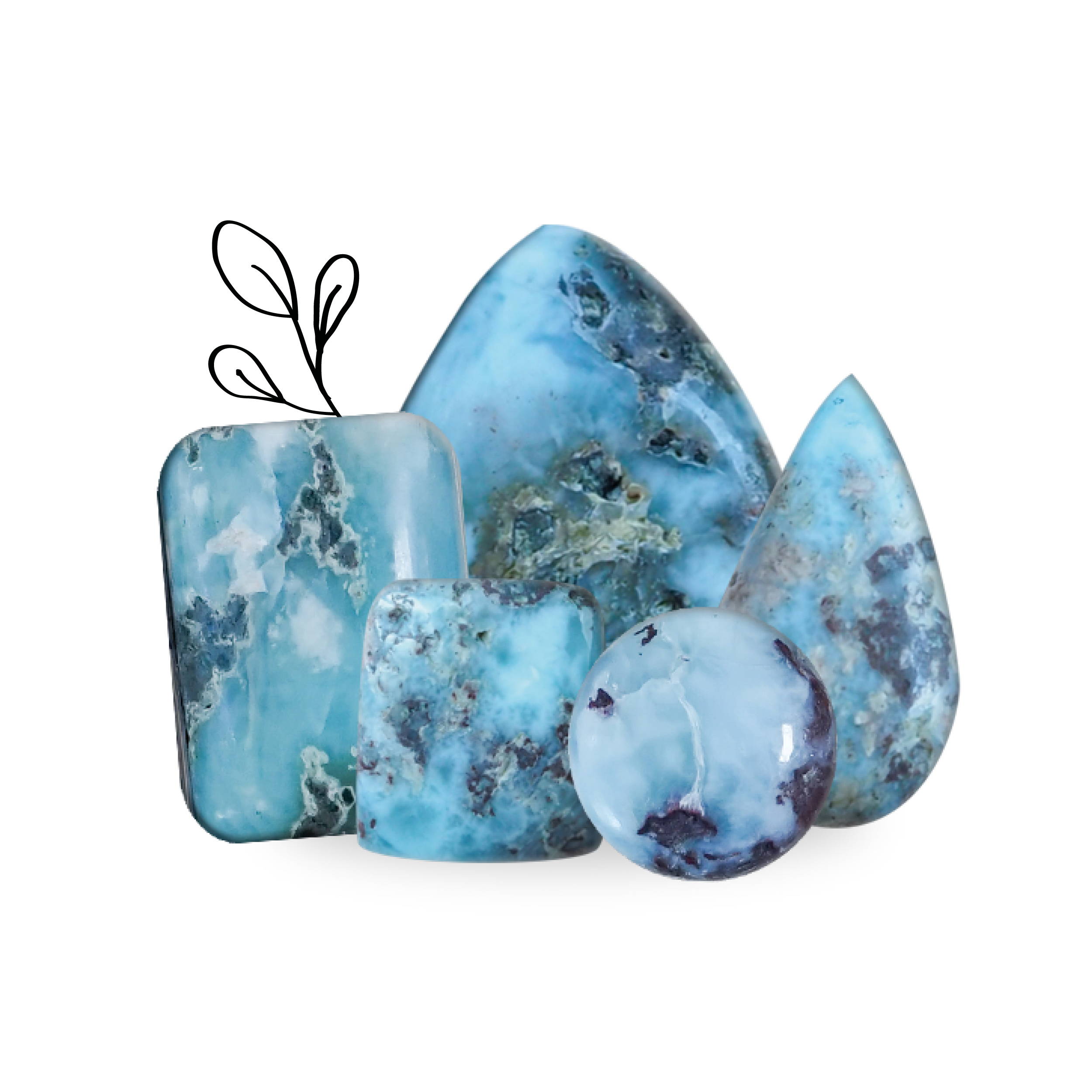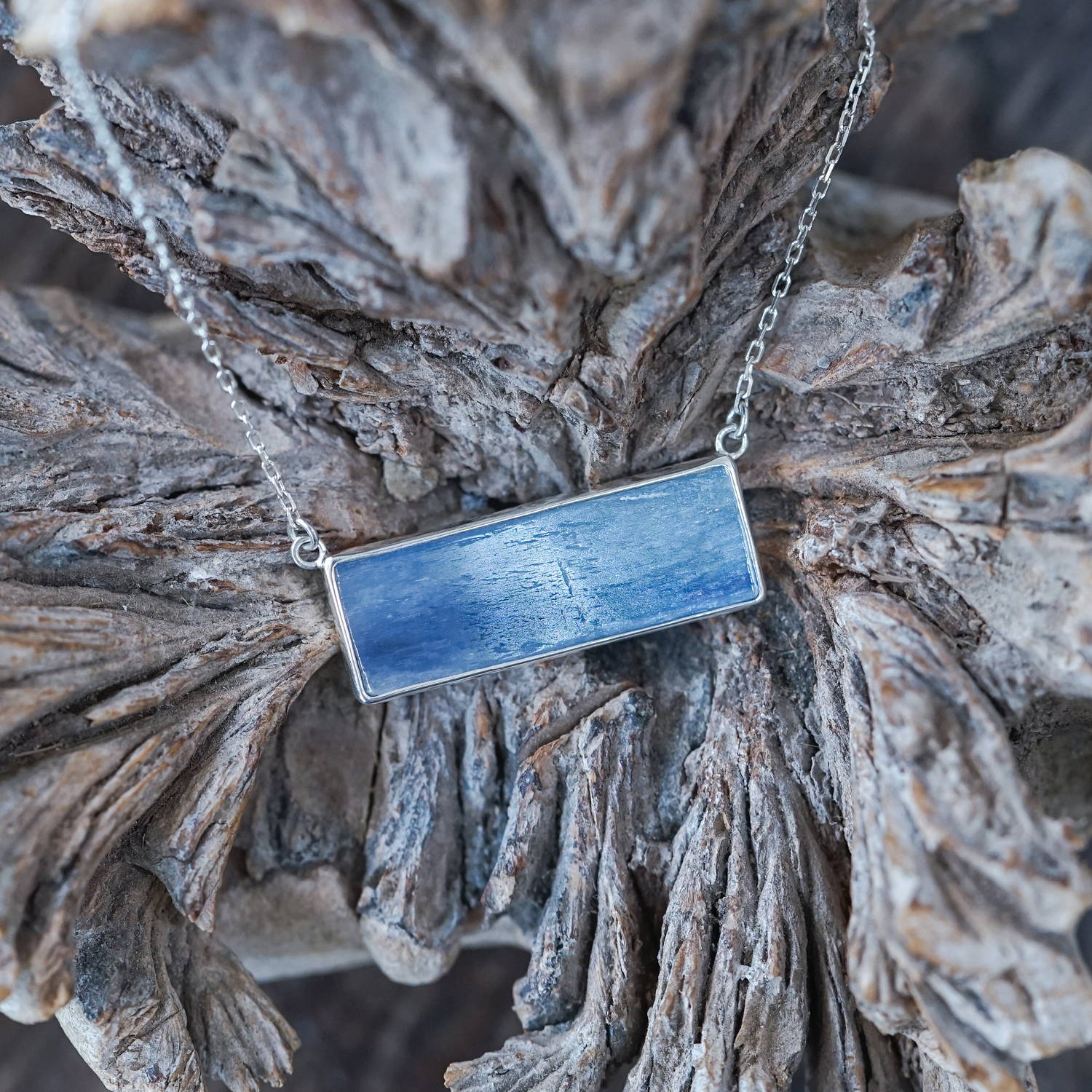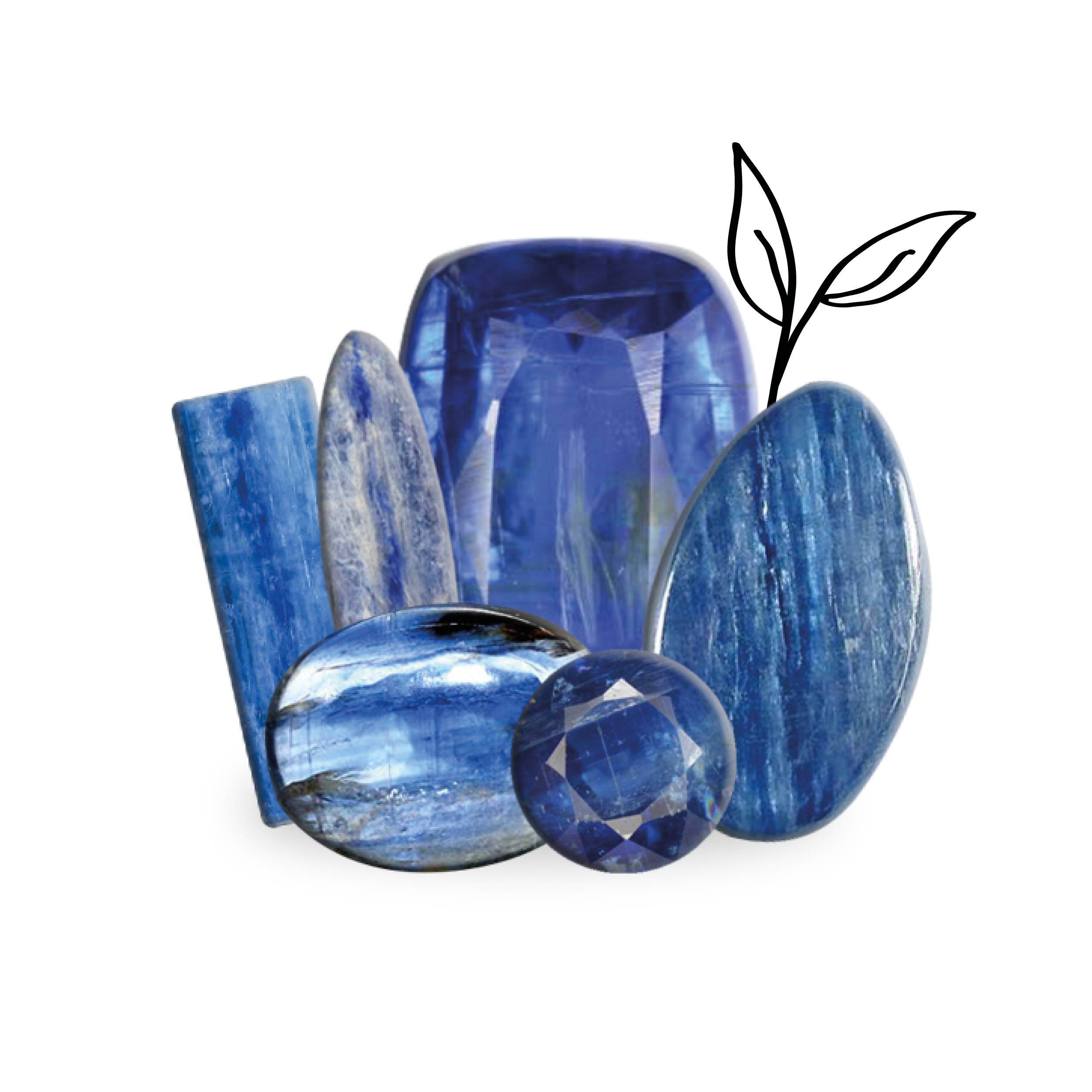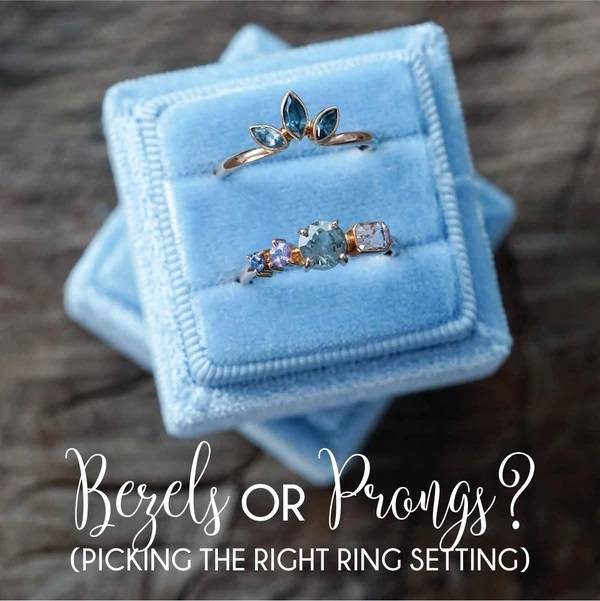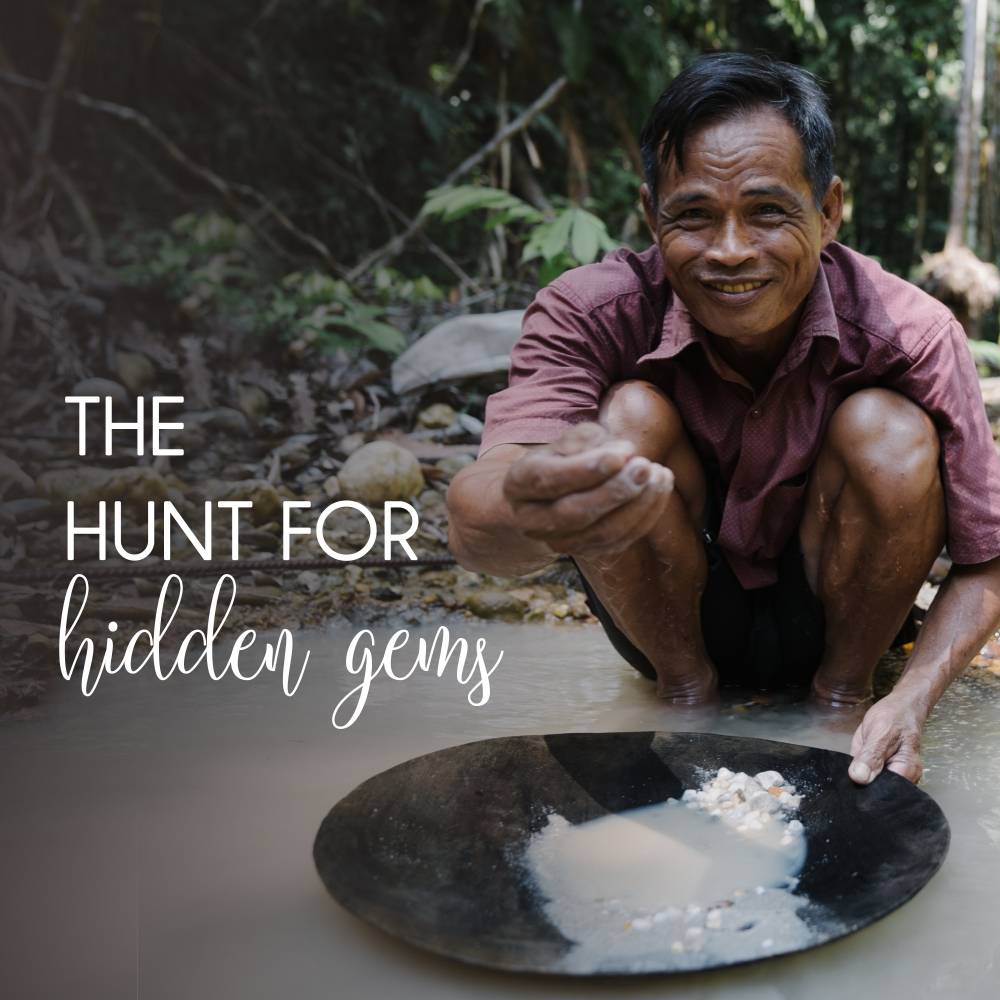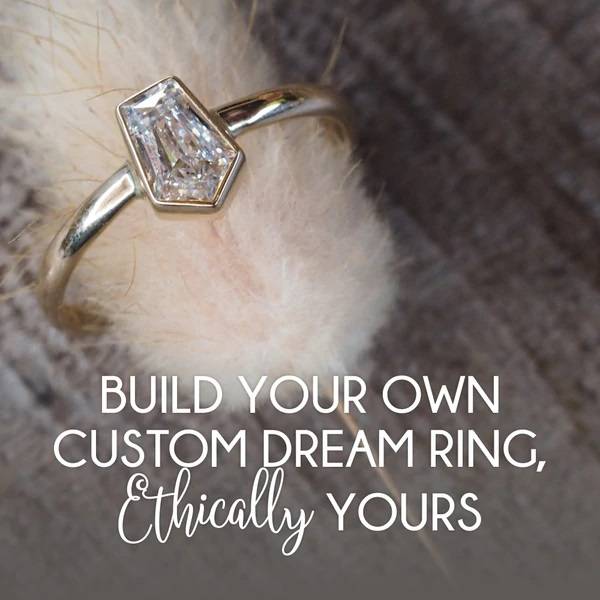Your Cart is Empty
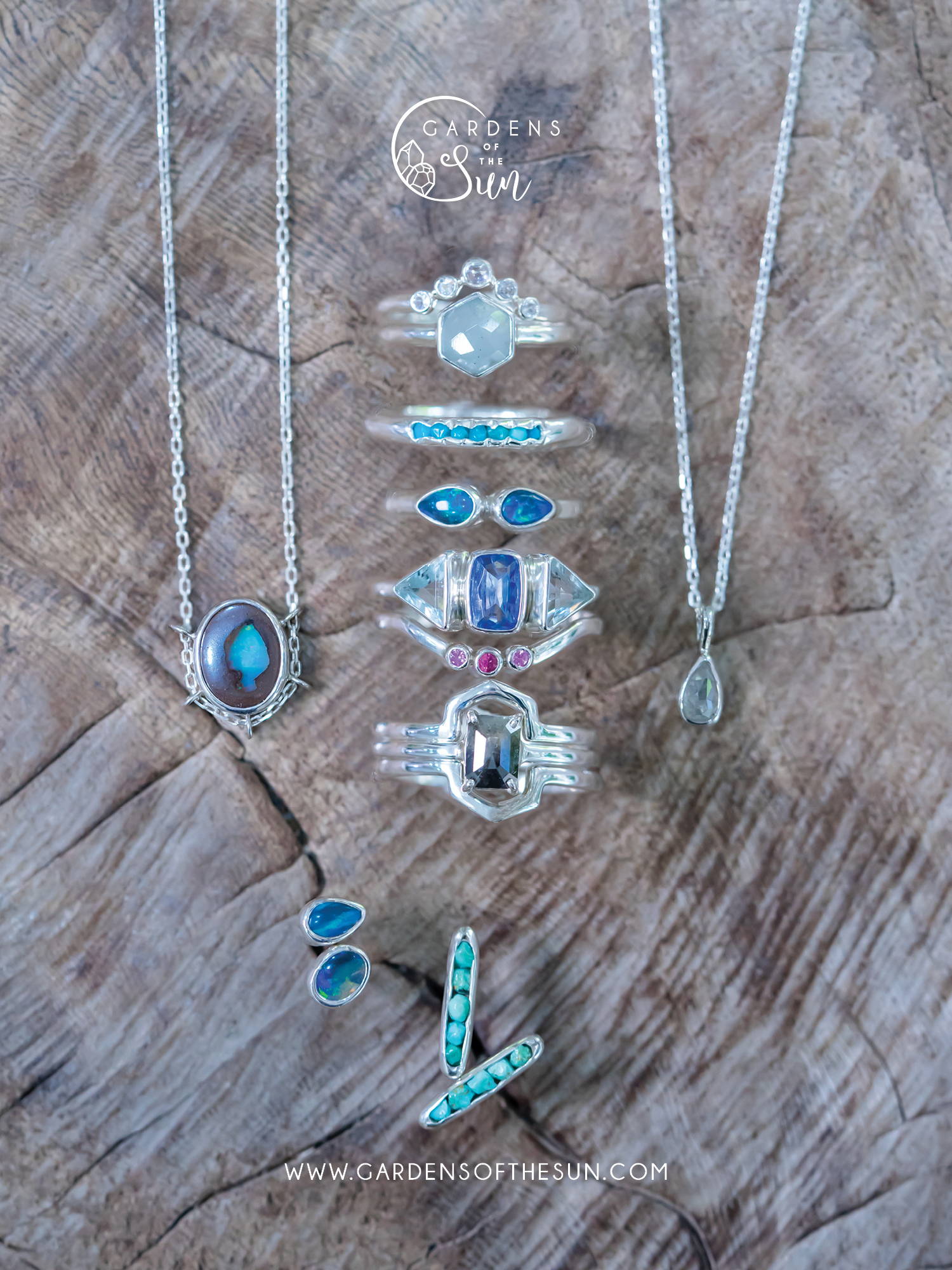
In love with patterns, flows and forms? You might be looking for a patterned gemstone.
Gemstones don’t always glitter. Some of them show patterns while dancing their way into your heart, lighting up your imagination.
Patterned gemstones are nothing like clear diamonds. They have swirls of colors or unusual light play which flashes as you move your ring. They can be opaque (like larimar) or translucent (like labradorite). A showcase of remarkable play of light (like opal) or mineral traces (like turquoise).
These gemstones are truly one of a kind, each one is the result of a unique chemical tapestry. There are plenty of reasons why patterned gemstones should get more love. Here are a few of our favorite gemstones:
Opal
Opal reigns in its long standing mystery as one of the world’s oldest rocks. This silica-based stone has been around since the dinosaur era, hence fossil opal! It’s no wonder looking at opal makes you feel transported in time, enwrapped in the magnificent scale of the epochs.
So what lends opal its twinkle of colors? You see - opal actually retains a good amount of water, ranging from 3% to 21%. Inside an opal are tiny pockets made of silica. When light enters opal, the light is diffracted and reflected from the silica spheres into various colorful scintillations - exactly how rainbows are made.
These color flashes, called schillers, form aurora-like effects with colors ranging from neon pink to red and peacock green.
Care and caution:
Opal is a relatively soft gemstone and its high water content makes it sensitive to drying out, intense heat and sudden temperature changes. Its porous nature means it can easily soak up bleach, chemicals and cleaning fluid, so avoid contact with abrasive substances. If you store it for a longer period of time in a dry environment, keep it with a damp cloth. The only safe way to clean opal is with warm, soapy water, and a soft brush or cloth. Don’t soak or immerse your opal.
Dendritic Agate
Dendritic agate (also called tree agate) reminds me of those days underneath barren winter trees, gazing upwards towards the thick winter clouds. There’s something about it which calls our imagination for moments of solace and looking back (but not backwards!).
So what gives dendritic agate these winter wonderland patterns? Agate itself is a common stone, consisting of chalcedony and quartz, and is famously known for its banded patterns. Unlike most agates, dendritic agate has branch-like formations rather than bands. Set against a milky white base, the black inclusions are trace minerals, usually manganese or iron oxide minerals, or debris trapped inside.
Care and caution:
Dendritic agate is a pretty low maintenance stone! All you need to keep its colors from fading is regular cleaning with warm, soapy water.
Turquoise
Turquoise makes webby things (called matrix) look unusually chic and fun. Each turquoise mine has its own distinctive matrix pattern, so it’s one of the easiest gemstones to be traced back to its origin. New Lander Turquoise, for instance, has a mostly black appearance with small, densely-packed bubbles of greens, whereas Royston turquoise has a rustic background with patches of greens and blues. So how does the matrix form?
Turquoise is actually a secondary mineral, found in copper deposits. It grows on a host rock. The webbing pattern is actually the remaining host material, composed from a concoction of minerals from quartz to sandstone. The webbing pattern ranges from black, brown, to golden.
That’s why you can find the matrix in varying degrees of intensity: from tightly-knitted web pattern to absolutely none, just a plain blue turquoise. The blue color itself means there’s no iron present in the stone. The more the iron, the greener it is.
Care and caution:
Turquoise is a pretty soft and porous stone with a hardness of 5-6 on Mohs scale. The softness causes it to easily fracture or chip, and the porosity allows it to discolor, especially from exposure to sunlight and high heat, and contact with detergents, cosmetics and oils. It’s why treatments, like stabilization, are so common on turquoise. To keep its color, wash turquoise with warm soapy water and pat softly until it’s dry. Don’t use steam or an ultrasonic cleaner on your turquoise.
Salt and pepper diamond
Salt and pepper diamonds show how in the world of diamonds, there’s so much beauty in the in-between. And we’re all for it.
Diamonds can come with a range of inclusions. You can easily distinguish black (pepper) inclusions, which make the diamond look darker, and white (salt) inclusions, which make the diamond look cloudier and hazier. These inclusions can be feathers, twinning wisps, cavities, pinpoints, needles and even other minerals trapped inside while the diamond was forming for over 3 billion years.
Since the regular diamond is graded based on the 4Cs (cut, carat, clarity, and color), the salt and pepper diamond goes well beyond (and well above!) this grading system. Salt and pepper diamonds aren’t boasting clarity. And if it has to be numbered, it’s way off the chart. Salt and pepper diamonds may even be cut to highlight the inclusions, rather than maximize brilliance. That’s why you’ll see salt and pepper diamonds in fancy cuts - a fitting frame to the unique patterns within.
Care and caution:
Even though the diamond is at the top of the Mohs scale, the inclusions make salt and pepper diamonds more brittle. That means even though it can resist scratching pretty well, salt and pepper diamonds crack or chip easier than a regular diamond.
Labradorite
One of the most underrated and rare gemstones out there is high up on our unusually cool list! This stone glows electric blue and golden so bright, this shimmering effect is called labradorescence.
Labradorite is a feldspar mineral (like moonstone, also a glowing gemstone) often used in jewelry and ornamental materials (think luxurious looking kitchen tops). This is because labradorite has a unique way of reflecting light. As light enters its crystal structure, which is usually symmetrical, only a certain color wavelength is reflected. Like intense blue or golden or even hot pink, depending on the crystal structure. Labradorite’s game is strong and a magnificent stone.
Care and caution:
Labradorite doesn’t need much care - a quick rinse in warm soapy water with a soft brush will do the trick. Dry it with a soft cloth to avoid scratching since labradorite is a pretty soft stone (6 Mohs scale).
Larimar
Another underrated gem we so love is larimar. Larimar is a pectolite stone, which is the fancy name for volcanic stones formed around the world. Unlike other pectolite stones, larimar is found only in a 1 km2 area on the Bahoruco mountain range in Dominican Republic. Add to that the absurd miracle of how the look of larimar fits the image of a tropical island paradise - larimar is one special stone!
Like turquoise, larimar earns its blue color from traces of copper. The unique summer cloud patterns are the result of mixing and fast cooling of hot minerals during the stone formation. Looking for the picture perfect stone for summertime? This is it.
Care and caution:
Even though larimar has a sea blue coloring, it doesn’t do well with exposure to direct sunlight and high humidity. Don’t wear it on a beach day. After wearing, wipe gently with soft cloth. Wash with warm, soapy water.
Kyanite
Kyanite is a stone with remarkable portraits of ocean waves. Kyanite isn’t your typical jewelry stone because it’s mostly used to manufacture ceramics or as parts in the automotive industry. This is because kyanite is so good at retaining heat, it’s basically the go-to filler material when things are thrown under intense heat pressure. Moral of the story? A gemstone can be a literal powerhouse.
Kyanite’s blue color comes from traces of iron and titanium during the rock’s formation, with white streaks resembling the burst of ocean bubbles
Care and caution:
Even with its power to retain heat, kyanite is a soft stone. So make sure to store it properly and away from harder stones such as sapphires or diamonds to avoid scratching. Clean it regularly with warm, soapy water.
Now that you know gemstones don’t need to be fancy to be flashy, let’s find out which gemstone suits your story best!












